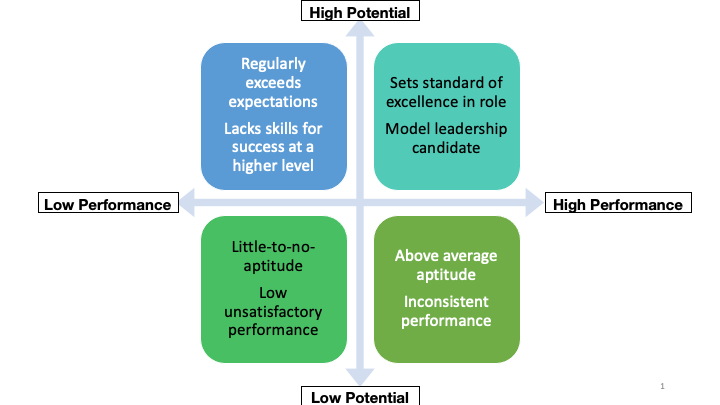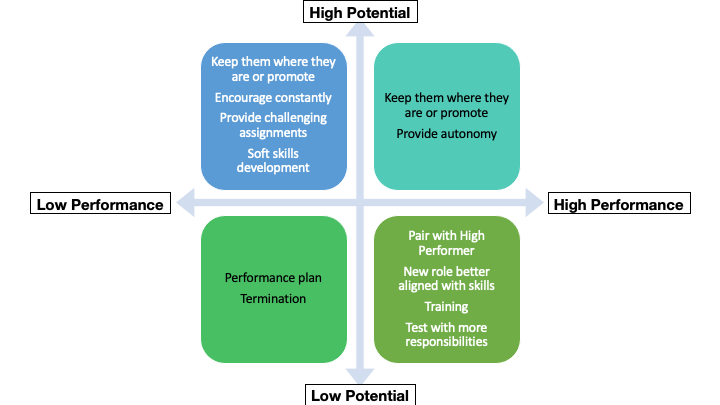If your end goal is to build a more robust talent pipeline — by developing and retaining top talent — performance can’t be the only point to look at. It is critical to also look for potential. Many find it difficult to distinguish one from the other, thus promoting and rewarding top performers while HiPo’s, who are rough diamonds waiting to be polished to shine, are ignored. This makes them become disengaged and eventually leave the organization.
A High Potential can sometimes not be a High Performer; and the opposite. However one can be both a High Potential and a High Performer.
There are strategies that any organization can apply to develop High Potentials and High Performers effectively.
- How to Identify (Characteristics)
| High Performers | High Potentials |
| Stand out in the organization Consistently exceed expectations Are management’s go-to for difficult projects Take pride in their accomplishments Need constant encouragement and challenging assignments May not have the potential and/or the desire to get promoted in a higher-level position. | Have demonstrated an initial aptitude for their technical abilities Determined to deliver quality results Have the aspiration and ability to be successful leaders within the organization Work to understand the business on a deeper level Strive on how they can have the biggest impact and be successful |
It all starts with line Managers. By working with leadership, Managers can profile the skills that ensure success in key roles so they can identify both High Performers and High Potentials.
2. How to Assess (Competencies)
An essential part of objective assessment is an established standard of the attributes and competencies of model employees — as each category requires a different development strategy.

3. How to Engage & Develop (Strategies)
All efforts should be tailored to drive the desired results.
